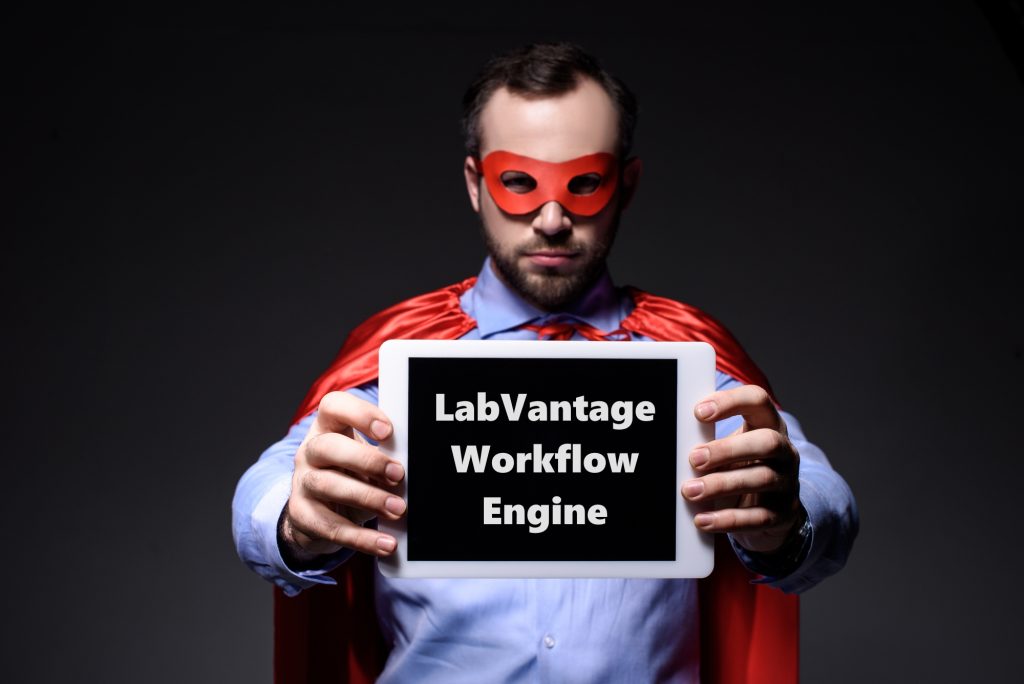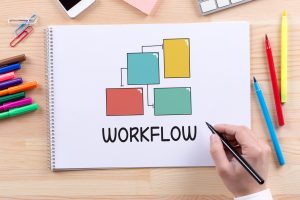 The COVID-19 pandemic triggered a global race to develop new testing methods capable of addressing the volumes and speeds necessary to tackle the disease’s progression. As a result, lab workflows were suddenly brought front and center. But what exactly are workflows, and why are they LabVantage’s secret superpower?
The COVID-19 pandemic triggered a global race to develop new testing methods capable of addressing the volumes and speeds necessary to tackle the disease’s progression. As a result, lab workflows were suddenly brought front and center. But what exactly are workflows, and why are they LabVantage’s secret superpower?
What Defines a Workflow?
In a lab environment, a workflow is a series of defined tasks a user follows. Workflows are determined and built according to approved test methods, known processes, and so on. They are designed to ensure that repetitive processes are performed correctly and according to best practices.
Workflows are critical to today’s labs, which face ever-increasing pressure to simplify complicated tasks, reduce risks and generate results faster.
For example, there are specific workflows a lab tech would use to test swabs for flu, or COVID-19, or bacterial infection or some other disease. There are also approved workflows for testing soil samples in accordance with EPA regulations or salmonella testing in accordance with the USDA.
In LabVantage, the term “workflow” also has another meaning. It’s a preconfigured operation in the Laboratory Information Management System (LIMS) that provides specific, step-by-step guidance. As a user completes each task, all they need to do is click “Next” to take the current batch of samples (or whatever else they might be working on) through to the next step. LabVantage workflows are smart; they can incorporate branching logic that directs the user to alternate paths depending on the results of any given step.

What Makes LabVantage So Great for Workflows?
LabVantage is unique among Laboratory Information Management Systems (LIMS) in that it has a specially-designed Workflow Engine, which enables workflows to be created or changed quickly and easily.
 The first “superpower” of this system is a robust internal library packed with massive amounts of data. This resource gives you an extensive catalog of tasks that are already defined out-of-the-box. Using the Workflow Manager, LIMS administrators can quickly create new tasks and assemble new workflows, leveraging the efficiencies of LabVantage APIs, existing user screens, and an intuitive drag-and-drop interface.
The first “superpower” of this system is a robust internal library packed with massive amounts of data. This resource gives you an extensive catalog of tasks that are already defined out-of-the-box. Using the Workflow Manager, LIMS administrators can quickly create new tasks and assemble new workflows, leveraging the efficiencies of LabVantage APIs, existing user screens, and an intuitive drag-and-drop interface.
The platform has nearly unlimited flexibility, a significant advantage in environments where testing processes are constantly changing, evolving or emerging — COVID-19 being the most obvious recent example.
When testing procedures change, the Workflow Engine makes it easy to modify configurations without starting over from scratch. For example, if you need a minor variation to a workflow, you can simply make a copy of it, make the small change, and you’re ready to go.
Another advantage of this system-guided approach is the ability to get lab personnel up and running on an application with far less investment of time and cost. Individual lab analysts don’t need to understand all the nuances of why each step is performed. They just need basic training to enable the workflow which guides them through the process.
Managing Complex Workflows
The Workflow Engine is an invaluable tool in a modern laboratory environment, where it serves as the central management hub across a variety of tools. These tools include:
- Instruments and External Systems —From simple connected instruments to complex web-driven systems, modern lab environments create and access massive amounts of data. Informatics and data management are critical to maximize throughput and minimize the risks of manual data entry errors.
- Laboratory Execution System (LES) — These systems provide another way for your lab to eliminate the risk of errors associated with manual data transcription. They also allow users to get instructions for standard procedures, access instruments, perform automatic data entry, track reagent inventories and usage, and provide detailed tracking of data changes to ensure regulatory compliance.
- Electronic Lab Notebook (ELN) —LabVantage’s ELN, which is fully-integrated within the LabVantage LIMS platform, builds on LES capabilities to provide a convenient framework for ad hoc modifications, removing the restrictions of pre-defined guidance. This gives users the flexibility to add and remove content on the fly. ELN worksheets can also be organized into project workbooks that can be copied and shared, eliminating redundant work.
 By combining LIMS, ELN, and LES into a single consistent platform, LabVantage makes data from any one of these systems instantly available in the others, without the need to move between systems. Users can easily start, stop, and pause Workflows, track their progress, or jump back into a previously-started sequence of tasks.
By combining LIMS, ELN, and LES into a single consistent platform, LabVantage makes data from any one of these systems instantly available in the others, without the need to move between systems. Users can easily start, stop, and pause Workflows, track their progress, or jump back into a previously-started sequence of tasks.
This same platform enables your LIMS administrator to create preconfigured LabVantage Workflows that can manage processes across functions within the LIMS, LES, and ELN. In this way, analysts can perform fast, automated processes or connect preconfigured operations in an end-to-end process without unnecessary navigation.

